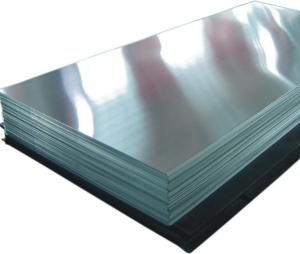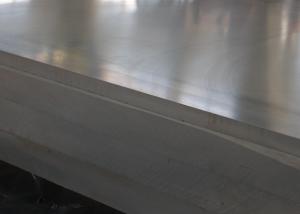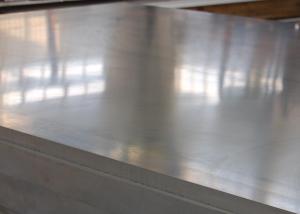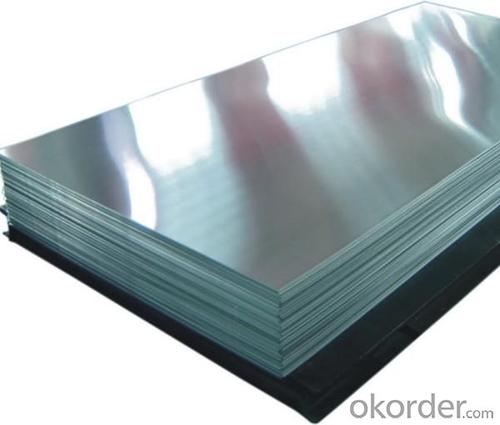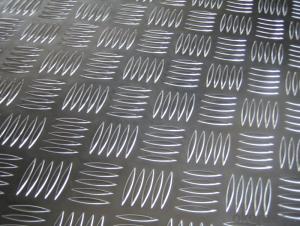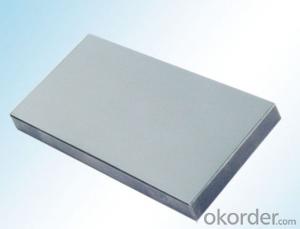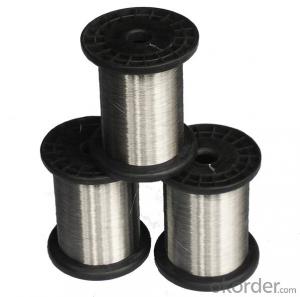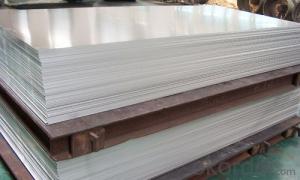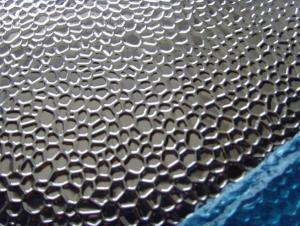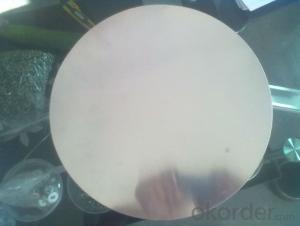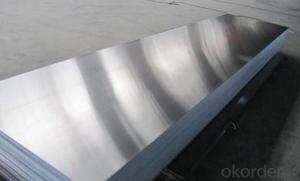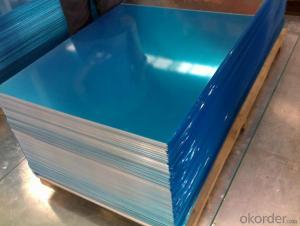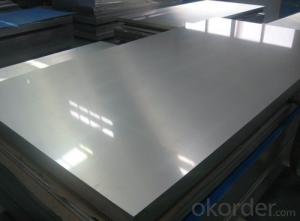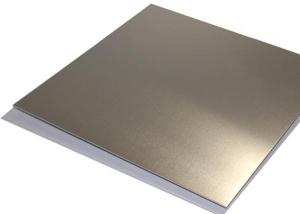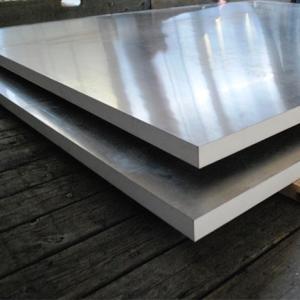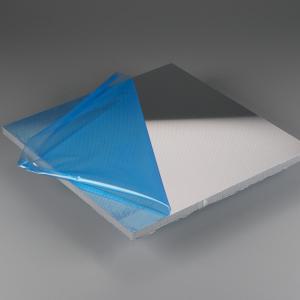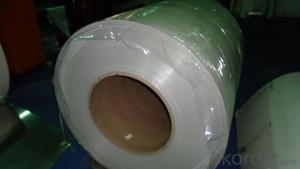Aluminum Sheets for Teardrop - Aluminum Plates 3003
- Loading Port:
- China Main Port
- Payment Terms:
- TT or LC
- Min Order Qty:
- 5 Tons m.t.
- Supply Capability:
- 10000 Tons Per Month m.t./month
OKorder Service Pledge
OKorder Financial Service
You Might Also Like
1 Specifications of Aluminum Plates 3003
|
Alloy Number |
AA1050 , AA1060 ,AA1070 ,AA1100 etc. |
|
Temper |
H12, H14, H16, H18, H22, H24, H26, H32, HO, F |
|
Thickness |
0.1mm – 500mm |
|
Width |
10mm- 2200mm |
|
Standard |
GB/T3880-2006, ASTM, ISO, EU standard |
Special Specification is available on customer’s requirement
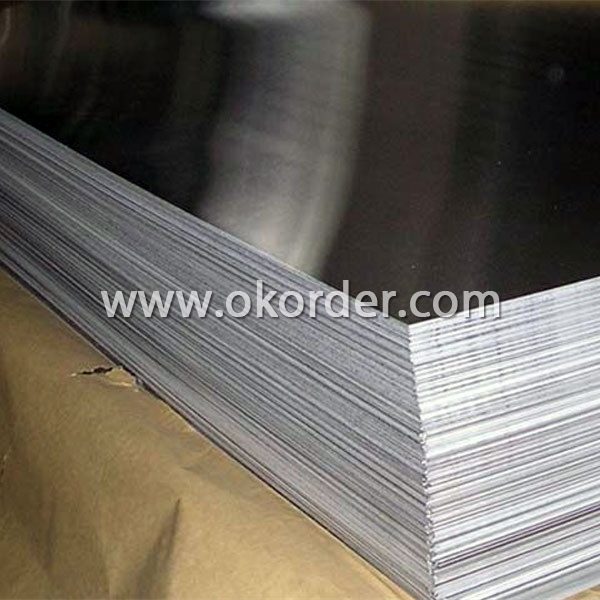
2 Usage/Applications of Aluminum Plates 3003
Aluminum Plates is between 0.1 mm and 500mm in thickness and has a wide variety of uses in the construction industry including aluminium siding and roofing. Sheet is also used widely in construction, decoration, transport applications and other various industrial filed, such as automobile body panels, airframes, curtain walls and the hulls of boats etc.
CNBM produces aluminum plates which meets the highest standards in its own mill while save the cost. Our strong quality control term bring you the most-qualified products. And with state-of-the-art equipment, and the state owned company background, we have to say, you will understand why there are so many company choose CNBM to be their supplier. CNBM aluminum complying with YS/T 429-2000(Chinese Industry Standard),GB/T 3880,EN485,ASTM B209.
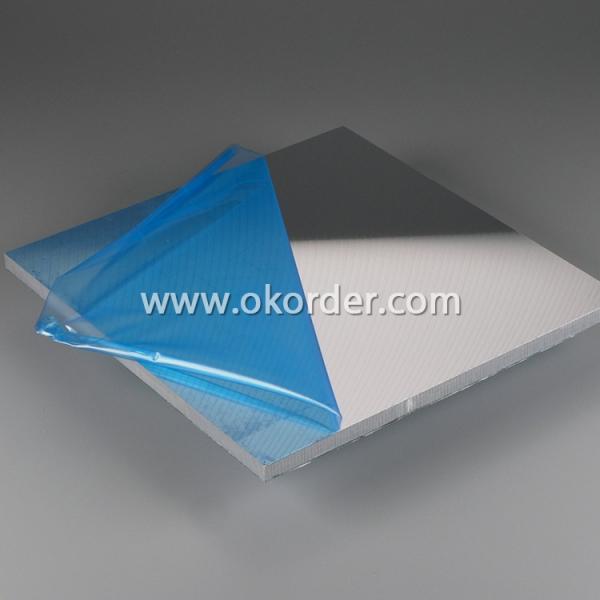
3 Packaging & Delivery of Aluminum Plates 3003
Packaging:Seaworthy package, bubble plastic bag inside, anti-moisture paper wrapped outside, covered with cartons, on wooden pallets, in containers. Pallet weight: Max. 2.30 tons.
Shipment:the goods will be delivered in 40 days after getting the buyer's payment.
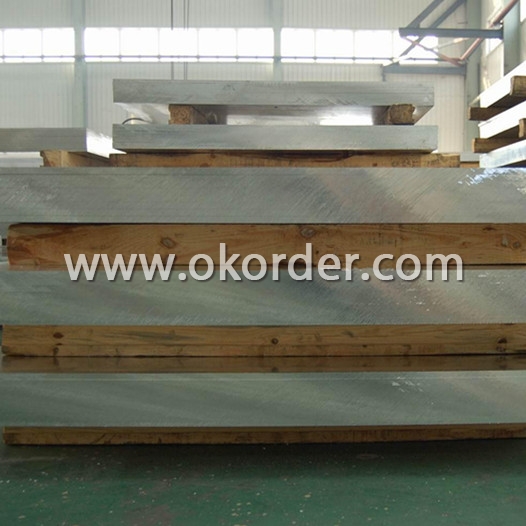
4 Production Flow of Aluminum Plates 3003
Rolling--Annealing--Slitting--Sawing, Cut-To-Length, Shearing
- Q: Can the aluminum sheets be used for heat dissipation purposes?
- Indeed, heat dissipation purposes can be served by employing aluminum sheets. The thermal conductivity of aluminum is widely recognized for its excellence, signifying that it adeptly conducts heat. Consequently, it emerges as an optimal substance for the dispersion of heat and its subsequent removal from a thermal origin. The utilization of aluminum sheets spans across multiple domains, encompassing heat sinks, cooling panels, and heat exchangers, all of which contribute to the effective dissipation of heat and the prevention of overheating. Moreover, the advantageous attributes of aluminum, such as its lightweight nature, resistance to corrosion, and ease of manipulation, render it a favored choice for heat dissipation within diverse industries, encompassing electronics, automotive, and aerospace.
- Q: Are aluminum sheets suitable for electrical bus bars?
- Certain applications may find aluminum sheets suitable for use in electrical bus bars. Aluminum possesses several properties that make it a viable choice for bus bars. Firstly, aluminum is a lightweight material, which can be advantageous in situations where weight reduction is crucial. Furthermore, aluminum exhibits good electrical conductivity, although it falls short of copper in terms of conductivity. Nevertheless, aluminum bus bars can still handle high electrical currents and are commonly employed in power distribution systems. However, one drawback of aluminum bus bars is their higher resistance compared to copper bus bars. Consequently, they have a tendency to generate more heat, particularly under heavy current loads. To address this issue, aluminum bus bars are often designed with larger cross-sectional areas to minimize resistance and dissipate heat more effectively. Another challenge associated with aluminum bus bars is their vulnerability to oxidation and corrosion. This concern can be tackled by applying protective coatings or utilizing alloys that offer superior corrosion resistance. Additionally, it is crucial to ensure proper insulation and avoid contact with dissimilar metals to prevent galvanic corrosion. In conclusion, aluminum sheets can serve as suitable materials for electrical bus bars, particularly in scenarios where weight reduction is a priority. However, careful consideration must be given to factors such as electrical conductivity, heat dissipation, and corrosion resistance to ensure optimal performance and longevity of the bus bars.
- Q: Aluminium magnesium alloy plate, 5052 aluminium plate, 5005 aluminium plate. 5252 aluminum plate performance and use
- Aluminum magnesium alloy aluminum sheet, also known as 5 * * * series aluminum alloy plate, which represents 5052 aluminum plate, 5005 aluminum plate, 5083 aluminum plate, 5754 aluminum plate, 5A02l aluminum plate, 5A05 aluminum plate and so on. The alloy elements of aluminium magnesium alloy aluminum plate are mainly magnesium, and the magnesium content is between 3-5%. The main characteristics are low density, high tensile strength and high elongation. In the same area, the weight of Al Mg alloy is lower than other series. It is often used in aviation, such as aircraft fuel tanks. It is also widely used in conventional industries. The processing technology is continuous casting and continuous rolling, belonging to the hot rolled aluminum plate series, so it can be oxidized deep processing. In our country, the 5 * * * series aluminum plate is one of the more mature aluminum plate series.
- Q: What is the cost of aluminum sheets?
- The cost of aluminum sheets can vary depending on factors such as size, thickness, and quantity. It is best to check with suppliers or retailers for current pricing information.
- Q: Could two pieces of aluminum sheets be welded together?
- or you can use file to rub back and forth, and it needs lots of practices or you can't weld the sheets.because aluminum sheet cann't be tightly welded to tin, it's hard to weld two pieces of aluminum sheets by common welding methods.it's hard, the aluminum sheets are oxidized soon after polished by abrasive paper.and you need to cover the new polished area with soldering paste and learn some operating skills.owing to aluminum sheets' high oxidized speed, you need to wipe the aluminum sheets with soldering paste and soldering tin and rub them with large power soldering iron, then the aluminum sheets will be tightly welded to tin.so two pieces of aluminum sheets could be welded together.
- Q: Can aluminum sheets be welded?
- Indeed, welding aluminum is a possibility. Aluminum, being a versatile material, lends itself well to welding through the utilization of different techniques like Tungsten Inert Gas (TIG) welding, Metal Inert Gas (MIG) welding, and Gas Metal Arc Welding (GMAW). However, it is important to note that welding aluminum requires special considerations due to its unique properties in comparison to other metals. Aluminum possesses a low melting point and high thermal conductivity, necessitating a higher heat input and faster welding speed when compared to other metals. Additionally, there is the swift formation of aluminum oxide on the surface, which mandates the removal of this oxide layer prior to welding. To ensure a proper weld quality, specialized welding techniques such as alternating current in TIG welding or the usage of a spool gun in MIG welding are often employed. All in all, with the correct techniques and equipment, aluminum sheets can indeed be welded successfully, making it a favored choice in industries including automotive, aerospace, and construction.
- Q: Can aluminum sheets be used for chemical distillation columns?
- Yes, aluminum sheets can be used for chemical distillation columns, particularly for low temperature and non-corrosive processes. However, it is important to note that aluminum may not be suitable for high temperature or corrosive applications, as it can react with certain chemicals and corrode. In such cases, alternative materials like stainless steel or glass may be more appropriate.
- Q: Can aluminum sheets be used for automotive body panels?
- Yes, aluminum sheets can be used for automotive body panels. In fact, aluminum is increasingly being used in the automotive industry for its lightweight properties and high strength-to-weight ratio. Using aluminum sheets for body panels helps reduce the overall weight of the vehicle, which in turn improves fuel efficiency and performance. Additionally, aluminum is highly resistant to corrosion, making it a durable choice for automotive applications. The use of aluminum sheets for automotive body panels has become especially popular in the production of electric vehicles, as their lightweight construction helps maximize the range of the vehicle.
- Q: My mother has this idea that when her boyfriend puts coals from the wood stove in aluminum containers to warm the house that inhaling the fumes can cause Alzheimer's disease later in life. I am just curious about the truth of it.
- Aluminum does not, in any way, cause Alzheimers. More than 15 years ago, researchers identified higher quantities of aluminum in the brains of those with Alzheimers and even autism. It is the result of the blood-brain barrier being broken. In other words, it is a result, not a cause. Alzheimer's is currently believed to be caused by a virus as well as arterial changes in those who have diabetes (I just learned this one from my doctor last week). In other words, it is multicausal, but very likely associated with a virus. All that said, burning wood can increase your risk of respiratory problems and will make current respiratory problems worse. It is mostly problematic for children though.
- Q: i keep hearing all these things about burning aluminum foil and such
- Yes, it will not hold up and if the fire gets hot enough, it may melt. It is better to use rocks that do not come from a stream or any water area.
1. Manufacturer Overview
| Location | Henan, China |
| Year Established | 1996 |
| Annual Output Value | Above US$200 Million |
| Main Markets | Mid East;Eastern Europe;North America |
| Company Certifications | ISO 9001:2000;ISO 14001:2004;OHSAS 18001 |
2. Manufacturer Certificates
| a) Certification Name | |
| Range | |
| Reference | |
| Validity Period |
3. Manufacturer Capability
| a) Trade Capacity | |
| Nearest Port | Shanghai |
| Export Percentage | 30%-50% |
| No.of Employees in Trade Department | 21-50 People |
| Language Spoken: | English;Chinese |
| b) Factory Information | |
| Factory Size: | Above 100,000 square meters |
| No. of Production Lines | Above 10 |
| Contract Manufacturing | OEM Service Offered;Design Service Offered |
| Product Price Range | Average |
Send your message to us
Aluminum Sheets for Teardrop - Aluminum Plates 3003
- Loading Port:
- China Main Port
- Payment Terms:
- TT or LC
- Min Order Qty:
- 5 Tons m.t.
- Supply Capability:
- 10000 Tons Per Month m.t./month
OKorder Service Pledge
OKorder Financial Service
Similar products
Hot products
Hot Searches
Related keywords
